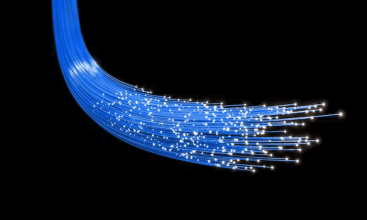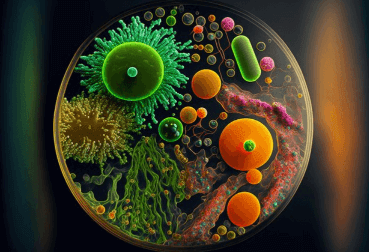Question
a.
True
b.
False
c.
May be True or False
d.
Can't say
Posted under Bioinformatics
Interact with the Community - Share Your Thoughts
Uncertain About the Answer? Seek Clarification Here.
Understand the Explanation? Include it Here.
Q. Molecular clock is an assumption by which molecular sequences evolve at varying rates.
Similar Questions
Explore Relevant Multiple Choice Questions (MCQs)
Q. A gene phylogeny only describes the evolution of a particular gene or encoded protein.
View solution
Q. Evolution of a particular sequence _______ correlate with the evolutionary path of the species.
View solution
Q. The species evolution is the ______ of evolution by _____ in a genome.
View solution
Q. To obtain a species phylogeny, phylogenetic trees from a variety of gene families need to be constructed.
View solution
Q. It is often desirable to define the root of a tree. There are two ways to define the root of a tree. One is to use an outgroup, which ______
View solution
Q. Which of the following is incorrect statement about the Kimura model?
View solution
Q. Which of the following is incorrect statement about Choosing Substitution Models?
View solution
Q. The second step in phylogenetic analysis is to construct sequence alignment. This is probably the most critical step in the procedure because it establishes positional correspondence in evolution.
View solution
Q. Which of the following is an incorrect statement?
View solution
Q. Which of the following is an incorrect statement about Newick Format?
View solution
Q. Sometimes a tree-building method may result in several equally optimal trees. A consensus tree can be built by showing the commonly resolved bifurcating portions and collapsing the ones that disagree among the trees, which results in a polytomy.
View solution
Q. The number of rooted trees (NR) for n taxa is ______
View solution
Q. For unrooted trees, the number of unrooted tree topologies (NU) is ________
View solution
Q. It can be computationally very demanding to find a true phylogenetic tree when the number of sequences is large.
View solution
Q. Which of the following is incorrect statement about Molecular Markers?
View solution
Q. For studying the evolution of ________ divergent groups of organisms, one may choose either ______ nucleotide sequences, such as ribosomal RNA or protein sequences.
View solution
Q. In many cases ______ sequences are preferable to ______ sequences because they are relatively ____ conserved.
View solution
Q. Protein sequences can remain the same while the corresponding DNA sequences have more room for variation.
View solution
Q. DNA sequences are sometimes more biased than protein sequences because of preferential codon usage in different organisms.
View solution
Q. In Jukes–Cantor Model to correct evolutionary distances, A formula for deriving evolutionary distances that include hidden changes is introduced by using a logarithmic function. It is ____
View solution
Recommended Subjects
Are you eager to expand your knowledge beyond Bioinformatics? We've handpicked a range of related categories that you might find intriguing.
Click on the categories below to discover a wealth of MCQs and enrich your understanding of various subjects. Happy exploring!








